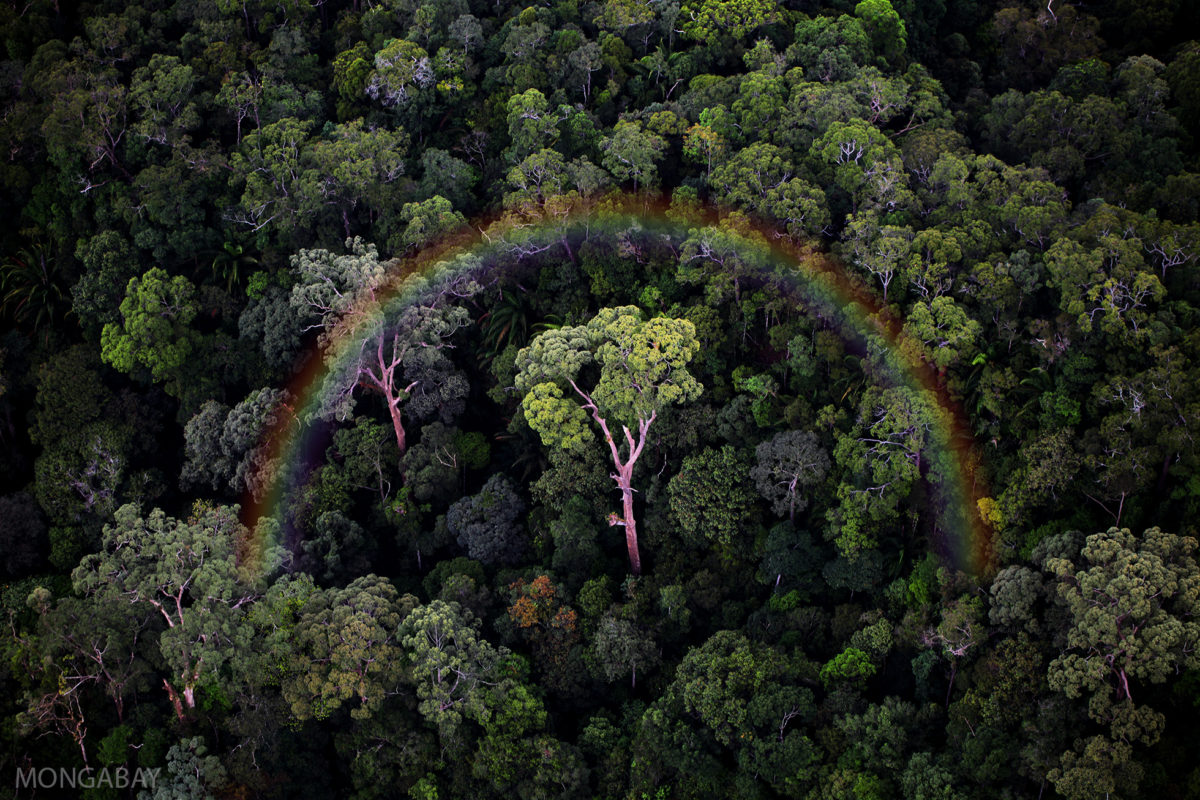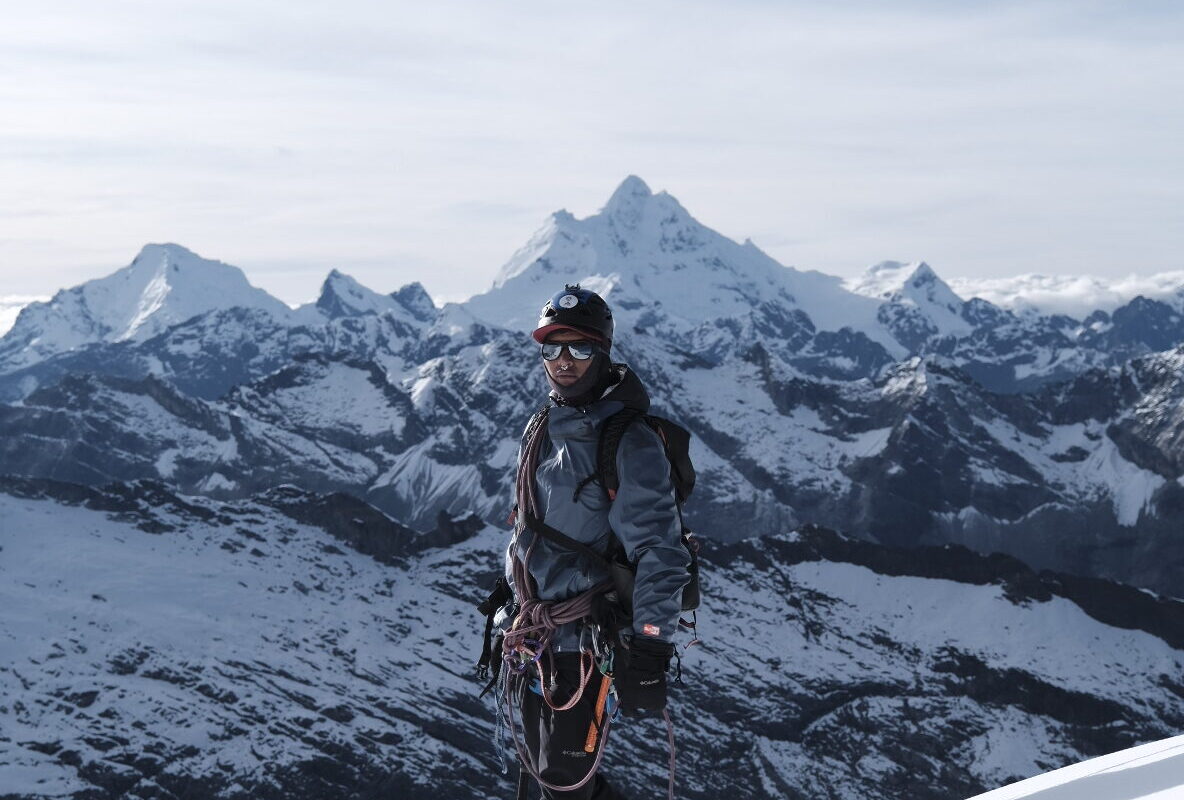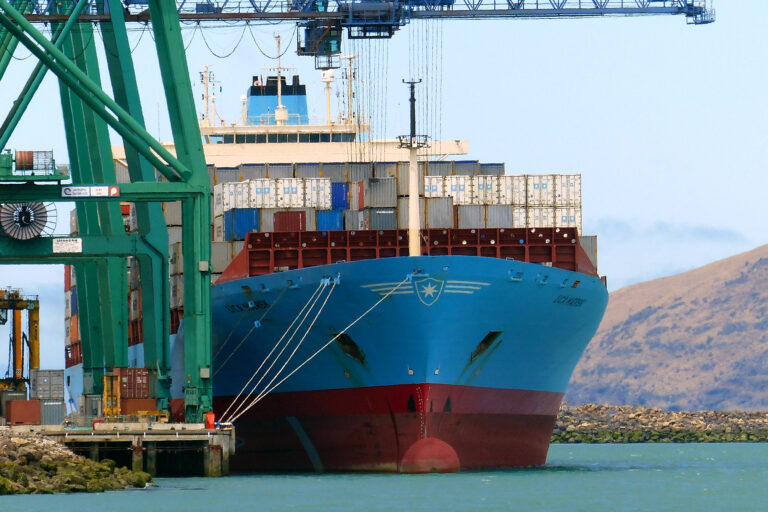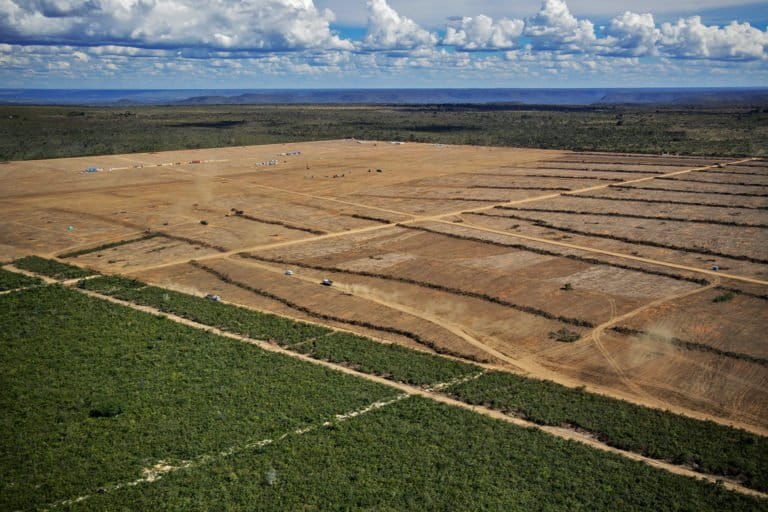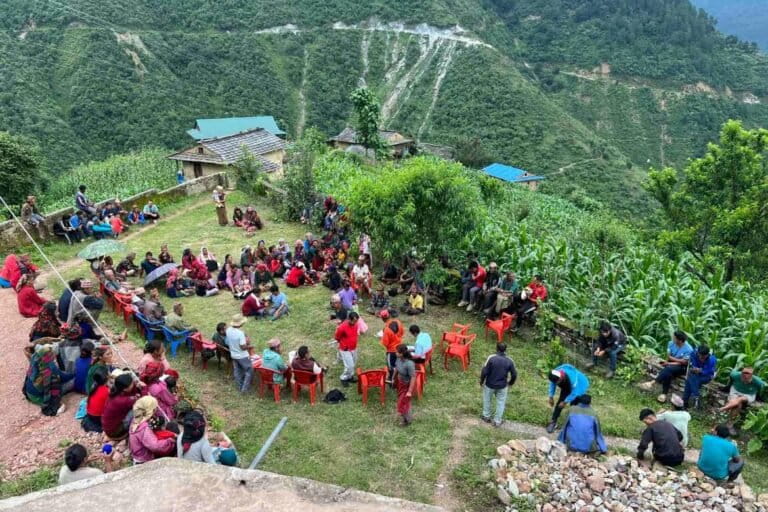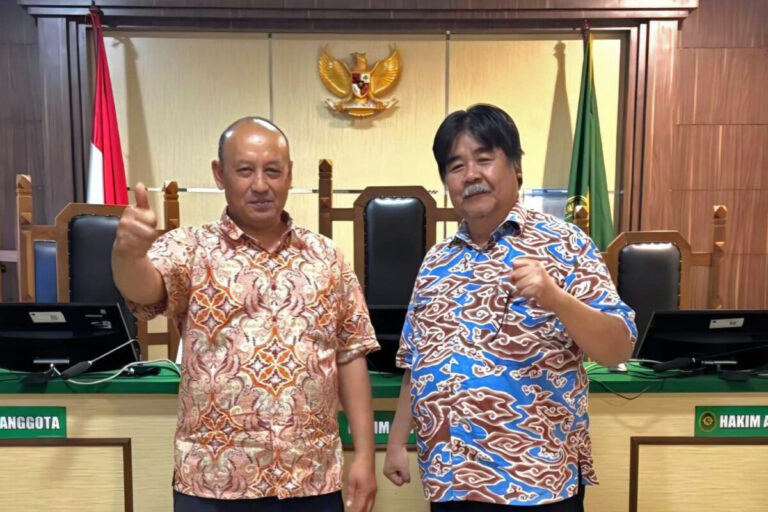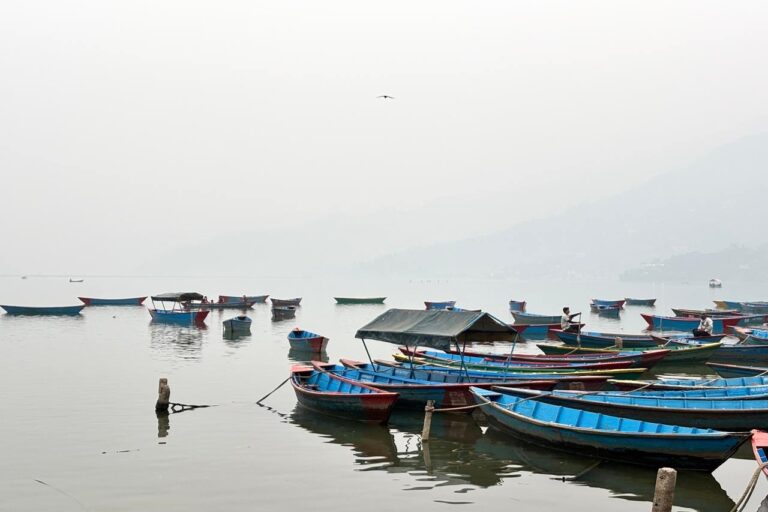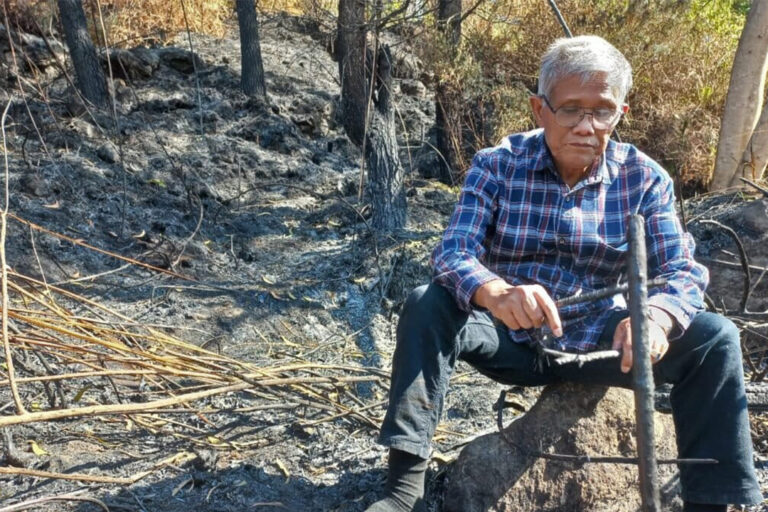- New species has ‘striking’ markings on its abdomen.
- It was found in unlogged, montane cloud forest.
- Its discoverers think more species unknown to science may live in the area, urge exploration and protection.
In 2011, Peruvian researcher Vanessa Uscapi was looking for amphibians in the high Andean cloud forest of southern Peru when she chanced upon a little frog in the leaf litter. From the top it looked brown and nondescript – but then she picked it up and turned it over. On its underside were blotches of white, like clouds against a dark sky.
It turned out to be a new species, and is described in a study published today in Zookeys. The study is authored by Uscapi, along with fellow researchers Alessandro Catenazzi and Rudolf von May.
The new frog, called Noblella madreselva, is the only one of its genus to have white belly-blotches, which the authors describe as “striking.”
“We really don’t know the function (if any) of the ventral markings, but other related species have some equally striking ventral coloration, sometimes with bold patterns and marks, and other time with flashy coloration (red, orange, yellow),” Catenazzi, who led the team, told Mongabay. “All these species usually are quite inconspicuous in their dorsal coloration, which is generally brown and helps the frogs camouflage in the leaf litter.
The new species also has a handful of other physical characteristics that set it apart from its relatives, such as little bumps on its eyelids and back, and a dark facial mask.
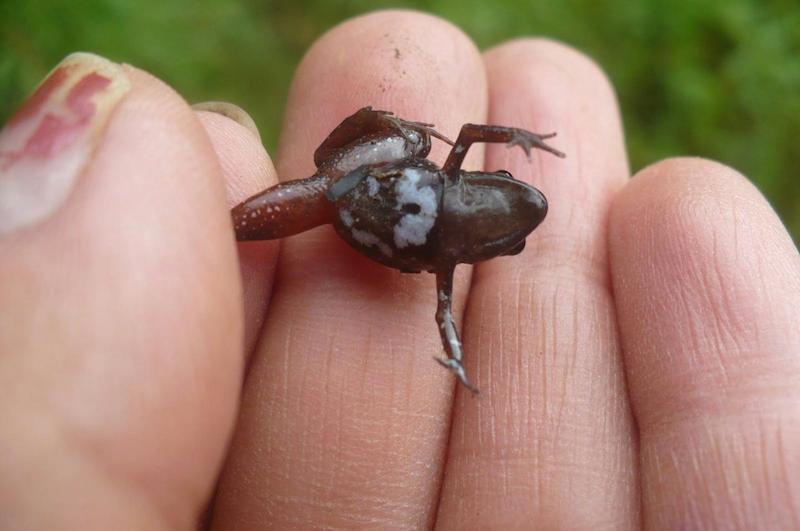
Noblella madreselva is a member of the fleshbelly frog family, or Craugastoridae, of which there are about 750 species. Fleshbelly frogs inhabit the Americas, and can be found from the southern U.S. through South America. Most are “direct-developing,” meaning they don’t have a tadpole stage like most frogs do, instead hatching from eggs as fully formed froglets. Because of this, many fleshbelly frogs don’t need water to reproduce and can breed terrestrially.
The researchers found N. madreselva high in the cloud forests of La Convención, in Peru’s Cusco Department.
“Like other recently described species in the genus, this new Noblella inhabits high-elevation forests in the Andes and likely has a restricted geographic distribution,” the authors write.
Its restricted distribution has the authors concerned. Although the conservation status of N. madreselva hasn’t yet been determined, they worry the species may be threatened by deforestation, disease, agricultural activities, and other human disturbances.
“Species with restricted geographic distributions are intrinsically threatened, and they are less likely to be protected by national parks and other national reserves, as previously shown for Peru,” the authors write.
Noblella madreselva is somewhat lucky in that part of its range coincides with areas that have not been logged, where it appears to be common. Several conservation initiatives are also active in the region, such as Madre Selva – Spanish for “mother jungle” – an ecolodge on whose property Uscapi found the first N. madreselva specimen, and which the new species honors with its name.

But while N. madreselva did appear to be common where it was first found, it may not be as abundant everywhere throughout its range.
“Often these terrestrial-breeding frogs have very patchy distributions — they can be locally abundant in a patch of forest, and occur at very low densities in other parts of the forest,” Catenazzi said. “However they generally do not occur in logged and heavily disturbed forests that lack leaf litter and moist microhabitats.”
The researchers caution that species with restricted ranges face myriad threats outside the relative security of reserves and parks. To make matters worse, many of these restricted habitats remain unexplored, and more new species may be lying in wait of scientific discovery – and formal protection.
“It is therefore imperative to document the highly endemic amphibian faunas of wet montane Andean forests as a first step towards designing a network of natural reserves that maximizes protection of amphibian biodiversity,” the authors write.
Citation
- Catenazzi A, Uscapi V, von May R (2015) A new species of Noblella (Amphibia, Anura, Craugastoridae) from the humid montane forests of Cusco, Peru. ZooKeys 516: 71-84. doi:10.3897/zookeys.516.9776


